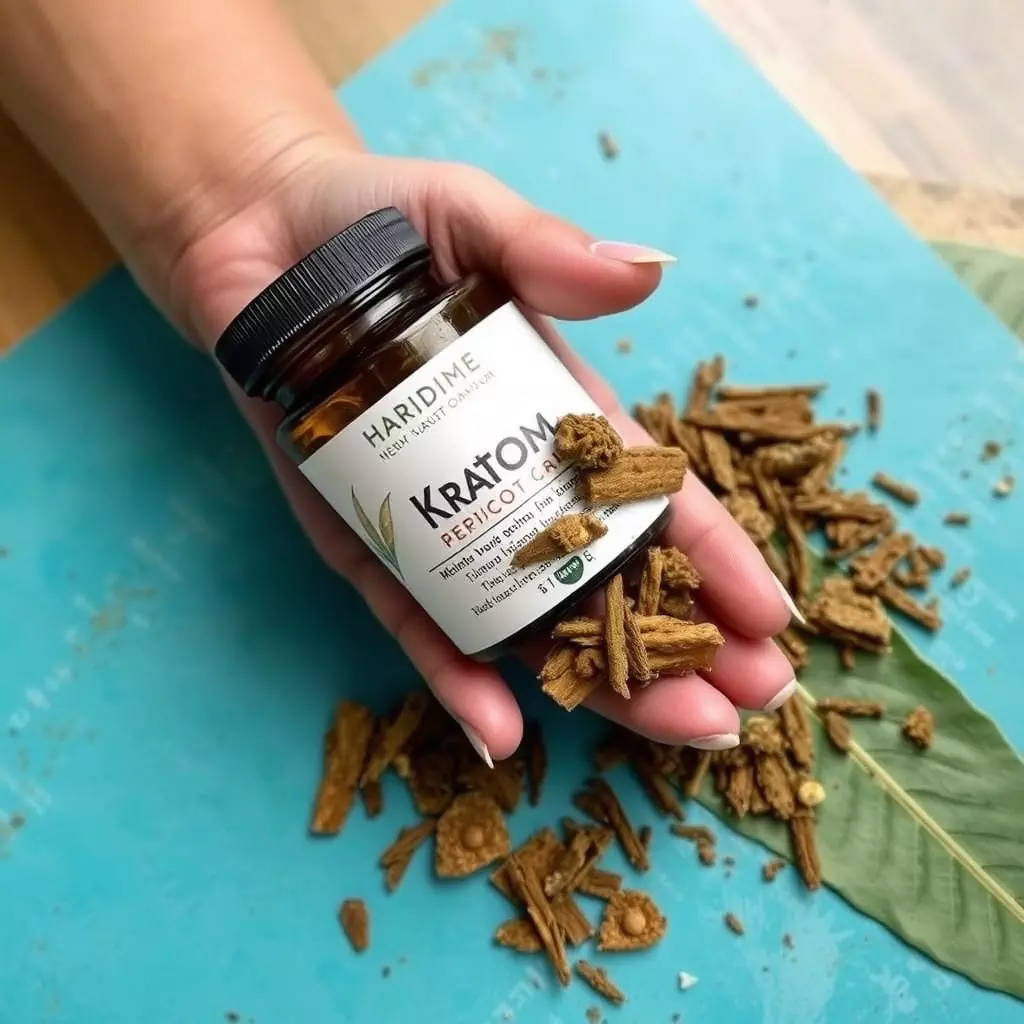Kratom, derived from Southeast Asia's Mitragyna speciosa tree, has been recognized for its potential role in providing joint pain relief, particularly for conditions like osteoarthritis and rheumatoid arthritis. Its active alkaloids, mitragynine and 7-hydroxymitragynine, may interact with opioid receptors to offer analgesic benefits and reduce joint inflammation and stiffness. While it can be a part of recovery strategies for athletes and fitness enthusiasts, the FDA's lack of long-term safety data necessitates caution. It's crucial to consult healthcare professionals before using kratom due to potential risks, especially for those in physically demanding activities who require tailored recovery plans. Kratom's analgesic effects, along with its influence on mood and energy levels, can aid in joint pain relief and contribute to a more holistic recovery process by enhancing mental well-being and vitality, potentially leading to improved athletic performance. However, due to variable effects and legal status, users should approach kratom use with discretion and seek professional medical guidance to ensure safe integration into their recovery routines.
Navigating the rigors of intense training often necessitates robust recovery strategies, particularly for those experiencing joint pain. This article delves into the multifaceted role of kratom in alleviating such discomfort, while also outlining effective post-training recovery tactics that are complemented by kratom use. We will explore how kratom can be seamlessly integrated into a comprehensive recovery plan to enhance athletic performance and promote overall well-being. Join us as we examine the intersection of training, joint pain relief with kratom, and holistic recovery methods for a balanced approach to athletic recovery.
- Understanding Kratom's Role in Joint Pain Relief
- Effective Training Recovery Strategies Enhanced by Kratom Use
- Integrating Kratom into a Holistic Post-Training Recovery Plan
Understanding Kratom's Role in Joint Pain Relief

Kratom, a tropical evergreen tree native to Southeast Asia, has garnered attention in various health and wellness circles for its potential impact on joint pain relief. The active compounds found in kratom leaves, known as mitragynine and 7-hydroxymitragynine, are believed to interact with the body’s opioid receptors, providing analgesic effects that can alleviate chronic discomfort associated with joint issues. Users reporting joint pain relief with kratom often cite the plant’s anti-inflammatory properties, which may help reduce the swelling and stiffness commonly experienced in conditions like osteoarthritis and rheumatoid arthritis. Training recovery strategies that incorporate kratom can be a crucial component of an overall approach to managing joint pain, potentially enhancing an individual’s ability to engage in regular physical activity and promote healing.
When considering the use of kratom for joint pain relief, it is essential to approach its integration into training recovery strategies with caution. The FDA has not evaluated the long-term effects of kratom, and its interaction with other medications should be carefully considered. Additionally, while some studies suggest kratom’s efficacy in managing pain, more research is needed to fully understand its potential risks and benefits. Users interested in exploring kratom as part of their joint pain relief regimen should consult with a healthcare provider to ensure safe and effective use, especially if they are athletes or individuals with demanding physical routines who require tailored recovery strategies.
Effective Training Recovery Strategies Enhanced by Kratom Use

When athletes or fitness enthusiasts engage in rigorous training, recovery is as critical as the exercise itself for optimal performance and overall health. A key component of effective training recovery strategies is addressing joint pain, which can hinder progress and lead to overuse injuries. Kratom, derived from the Mitragyna speciosa tree, has been explored for its potential benefits in joint pain relief with kratom. Specific strains such as Maeng Da and Bali are often cited for their analgesic properties, which may help alleviate discomfort associated with strenuous activity. By incorporating kratom into a recovery regimen, individuals can potentially reduce inflammation and experience pain relief, thus enabling them to engage in subsequent training sessions without the encumbrance of lingering joint pain.
Moreover, kratom’s influence on mood and energy levels could further enhance recovery. Its interaction with the brain’s opioid receptors may contribute to an improved sense of well-being, which is crucial for maintaining a positive outlook during a training regimen. Additionally, certain kratom strains are believed to stimulate energy production, which can be beneficial when recovering from intense physical exertion. This dual effect of managing pain and modulating mood and energy can create an environment conducive to efficient recovery, allowing for more consistent and effective training progressions. However, it is imperative to approach the use of kratom with caution, as its effects can vary greatly among individuals and may be subject to legal regulations depending on one’s jurisdiction. Always consult with healthcare professionals before integrating kratom into any recovery strategy.
Integrating Kratom into a Holistic Post-Training Recovery Plan

Integrating Kratom into a comprehensive post-training recovery plan can be a beneficial addition for individuals seeking joint pain relief with Kratom. Kratom, derived from the Mitragyna speciosa tree, has been traditionally used in Southeast Asia for its medicinal properties. In the context of athletic recovery, Kratom is gaining attention for its potential to alleviate joint discomfort and muscle soreness that often accompany intense training sessions or competitive events. The active alkaloids found in Kratom, such as 7-hydroxymitragynine and mitragynine, are believed to interact with the body’s opioid receptors, providing pain relief and promoting a sense of well-being. This can be particularly advantageous for athletes or fitness enthusiasts who experience inflammation or pain in their joints due to the repetitive stress of their activities.
When incorporating Kratom into a holistic recovery strategy, it’s important to consider dosage and the timing of intake relative to training and rest periods. A careful approach should be taken to ensure that Kratom complements other recovery methods such as proper nutrition, adequate hydration, sufficient sleep, and effective stretching or massage therapy. Additionally, individuals must adhere to safety guidelines and consult with healthcare professionals before integrating Kratom into their regimen, especially considering its potential interaction with other medications. By doing so, athletes can harness the joint pain relief benefits of Kratom as part of a multifaceted recovery protocol designed to enhance performance and overall health in the long term.
In conclusion, the integration of kratom into training recovery strategies can significantly contribute to joint pain relief and overall post-training recuperation. By understanding its role in alleviating joint discomfort and incorporating it judiciously within a comprehensive recovery plan that includes other holistic practices, athletes and fitness enthusiasts may find enhanced healing properties and improved performance outcomes. It is imperative for individuals to approach kratom use with caution, adhering to recommended dosages and consulting healthcare professionals to ensure safety and efficacy. With careful consideration and proper application, kratom can be a valuable adjunct in the recovery process for those seeking joint pain relief and effective training recovery strategies.






